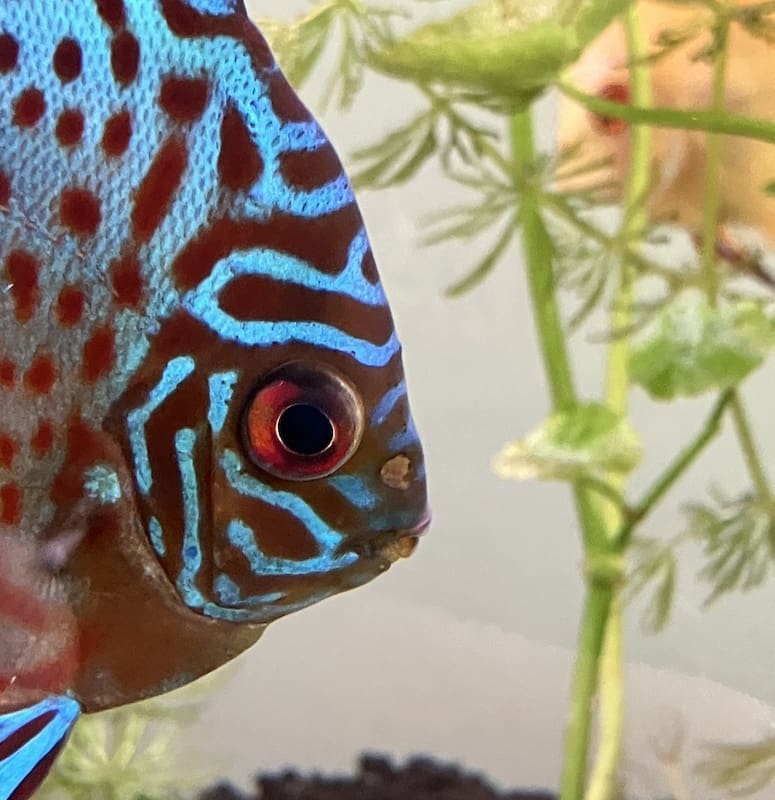Hole-in-the-Head Disease in Fish: Causes, Treatment, and Prevention
Table of Contents
- What is Hole-in-the-Head Disease?
- What Causes Hole-in-the-Head Disease?
- Symptoms of Hole-in-the-Head Disease
- How to Treat Hole-in-the-Head Disease
- How to Prevent Hole-in-the-Head Disease
- FAQs: Quick Answers to Common HITH Questions
What is Hole-in-the-Head Disease?
Hole-in-the-Head Disease, or HITH, is when small pits or holes form around your fish’s head and body. You’ll see it most often in cichlids, but other species can get it too. If it’s left untreated, these tiny holes can grow and lead to more serious problems. Believe me, I’ve been there. One of my oscars got it, and I had to act fast.
What Causes Hole-in-the-Head Disease?
There are a few things that can lead to HITH. Let’s break it down:
- Poor Water Quality: Dirty water stresses fish out, and when they’re stressed, diseases like HITH can take hold. Water quality really is everything. If you miss those regular water changes, trouble’s likely on the way. Need help maintaining perfect water parameters? Check out our guide on perfect water parameters.
- Nutritional Deficiencies: Fish need a balanced diet, just like we do. If they’re not getting enough vitamins, especially Vitamin C and D, they’re more likely to get HITH. I’ve had my own picky discus that refused to eat anything but flakes—until I had to switch things up!
- Activated Carbon: Long-term use of activated carbon may cause problems by taking out important minerals in the water. I’ve seen this connection myself, so I usually take it out of the filter when dealing with sensitive fish.
- Parasites and Bacteria: Some experts believe parasites like Hexamita may be linked to HITH. Once those pits form, bacteria can jump in and cause more damage.
Symptoms of Hole-in-the-Head Disease
Catching HITH early makes a big difference. Look for these signs:
- Small pits or lesions on the head or along the lateral line.
- Loss of appetite (your fish won’t eat).
- Lethargy or less movement.
- Rubbing against objects in the tank (they’ll seem like they’re itching themselves).
When I saw my oscar rubbing against the rocks and not eating, I knew something was up. Sure enough, those tiny holes started to show.
How to Treat Hole-in-the-Head Disease
If your fish have HITH, don’t wait. Here’s what you can do to treat them:
- Frequent Partial Water Changes: Start with 25-30% water changes every day for the first week. This keeps the water clean and gives your fish a chance to heal. Try using Python water changers to make water changes easier.
- Check Your Water Parameters: Use a test kit like API Master Kit and make sure your water is in good condition. You want 0 ppm ammonia, 0 ppm nitrites, and nitrates under 20 ppm.
- Boost Their Diet: Give your fish a vitamin-rich diet to help their immune system. If they’re not eating, try using Seachem Garlic Guard to make the food more appealing.
- Remove Activated Carbon: Take out any activated carbon from the filter and use something like Purigen or sponge filters instead. You can add the carbon back later once your fish are better.
- Medicate if Needed: If the pits aren’t healing, it’s time to use medication. Seachem Metroplex can help treat parasites like Hexamita.
- Immune System Support: Products like Seachem StressGuard can help reduce stress and promote healing.
How to Prevent Hole-in-the-Head Disease
To keep HITH from happening, focus on prevention:
- Keep the Water Clean: Regular water changes are your best defense. I do a 20-25% water change weekly to make sure the water stays fresh. Need some tips on tank maintenance? Check out our aquarium maintenance guide.
- Feed a Balanced Diet: Fish need variety. Use high-quality pellets, fresh veggies, and live or frozen food to keep them healthy.
- Avoid Overcrowding: Make sure your fish have enough room to swim. Overcrowded tanks lead to stress and can make diseases like HITH more likely.
- Limit Activated Carbon Use: Sensitive fish like cichlids may do better with limited carbon use. Consider alternatives for filtration.
FAQs: Quick Answers to Common HITH Questions
- Can Hole-in-the-Head Disease be cured? Yes, with quick action and proper care. The earlier you catch it, the better the recovery.
- Is HITH contagious? Not directly, but poor water conditions that cause HITH can affect other fish too. Fixing the environment is key.
- Should I remove activated carbon if my fish have HITH? Yes, especially for sensitive species. Remove it until your fish recover.
- How long does it take for a fish to recover from HITH? If treated early, improvement can be seen in a couple of weeks. Full recovery may take a few months.
- Are certain fish more prone to HITH? Yes, species like cichlids, discus, and oscars are more likely to develop HITH.
- Can I treat HITH with garlic or other natural remedies? Garlic supplements can help, but you need to improve water quality and diet first.
- Can HITH affect saltwater fish? Yes, saltwater fish can get a similar condition called HLLE, and the treatment is similar.


